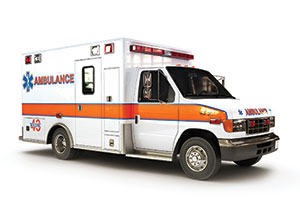Why You Need Tactical Medical Training
Imagine being at ground zero for the Boston Marathon bombing.

|
Imagine being at ground zero for the Boston Marathon bombing. This was a mass casualty incident that involved the Police, EMS, physicians, race officials, bystanders, citizens, students and more. Many hasty tourniquets were placed on victims, albeit they did save some lives. Would you or your co-worker know what to do if that happened?
According to Rodney Jaime, a paramedic, member of a city police department and of Medtac Solutions, having all the skills in the world won’t save your life or anyone else’s if you don’t have the training and equipment to treat life threatening injuries. And enterprise security executives and their teams need that training, he says. Bleeding out can occur in as little as one to three minutes if left untreated; useful consciousness is much less. Jaime has trained more than 3,000 police officers in this area and is the Lead Law Enforcement Instructor for the Tac Med Group in Pearland, Texas.
In the past, says Jaime, “The lion’s share of training for response to Active Shooter was concentrated on ‘Lock-Down Procedures’ and wait for emergency responders. This can no longer be the status quo. Waiting for first responders with a tactical response to a mass shooting can seem like an eternity. Treating at the point of wounding where literally seconds count is the difference between life and death. EMS will not enter if there is an active threat.”
According to Jaime, treating life threatening trauma is often neglected as it is misunderstood, and introducing the concept of tactical medicine into the civilian/private sector is often seen as taboo. Medical lifesaving training for non-emergency first responders reduces impulsive decision responses; which may result in increased liability, time off, monetary loss, litigation, PTSD, injury and loss of life.
“The true First Responder is the person who can treat at the Point of Wounding, providing lifesaving intervention at the right time and place when time is critical,” Jaime says. And this often should be security personnel. “Waiting and depending on Law Enforcement/EMS is unpredictable. Law enforcement’s priority is to stop the killing, not treat injuries,” he says.
In your experience, do enterprise security executives have much knowledge about what you do as a paramedic?
When Risk Assessment/Management comes to mind, are tactical medical integration assets taken into consideration? Tactical medical integration outside the tactical environment is the elephant in the room. What is it? It is not basic first aid or CPR.
So what can security executives do until you arrive on scene?
Understand that it will take up to 45 minutes for a full-time SWAT Team to assemble. Patrol officers will be the immediate responders. Amount and response times will vary according to resources. Having Lock-Down Protocols are useful, however it can delay law enforcement’s entry time. Do not expect to always escort law enforcement to threat areas; directions and diagrams are very helpful. Being trained in treating trauma and having treatment equipment available and staged in key areas helps all involved. Become a force multiplier.
What is Tactical Medicine and why do you say it’s now the norm?
There’s a saying, “Good Medicine Can Be Bad Tactics.” In other words, doing the right thing at the wrong place/time can be bad, even with the best intentions. Being tactically/medically trained for critical thinking under stress is vital. Personnel must be able identify threats and life threatening injuries as well as treating those injuries. A building collapse, explosion and an active shooter require a different tactical response, but a penetrating femoral artery wound is treated the same in either scene/situation. Understanding the priorities of treating trauma is the template in tactical medicine: MARCHE. Treat what will kill you faster. MARCHE is:
- Massive Bleeding
- Airway
- Respiration
- Circulation (Shock)
- Head Injury/Hypothermia
- Everything Else
Do paramedics now receive training in active shooter or workplace violence?
Yes, but it is only a recommendation. Just days before the Boston Bombing, the American College of Surgeons (ACS) Clinical Congress and FBI assembled national representatives from medicine, military and law enforcement and numerous national medical related associations to develop the “Fire/EMS Department Operational Considerations and Guide for Active Shooter and Mass Casualty Incidents.” In a nutshell, EMS will now wear body armor and helmet entering into a threat area. But this is up to each individual agency.
Looking for a reprint of this article?
From high-res PDFs to custom plaques, order your copy today!






